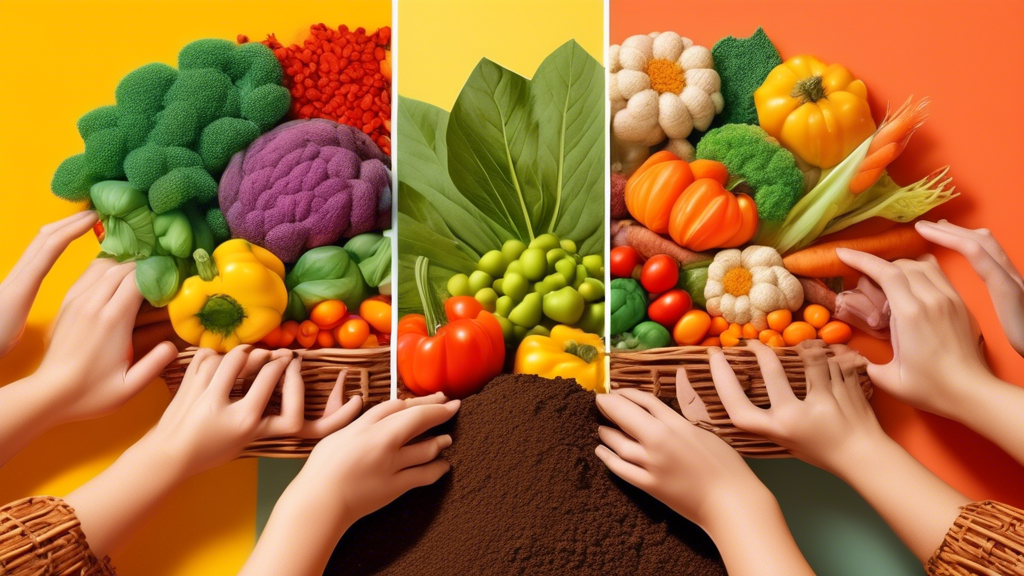Introduction
Welcome to the world of companion planting, a time-tested gardening technique that strategically pairs plants with mutual benefits. This method isn’t just about aesthetics—it’s about fostering a thriving ecosystem within your garden that boosts yields, deters pests, and enhances the overall health of your plants.
Understanding the Benefits of Companion Planting
Companion planting, also known as intercropping or mixed planting, offers a range of advantages:
1. Natural Pest Control
Certain plant combinations act as natural pest repellents. For example, planting marigolds alongside tomatoes deters whiteflies and nematodes, while basil repels aphids and mosquitoes, protecting vulnerable crops.
2. Attracting Beneficial Insects
Just as some plants repel harmful pests, others attract beneficial insects like ladybugs, lacewings, and hoverflies. These insects are natural predators to common garden pests, providing a natural form of pest control.
3. Improved Soil Health
Legumes, such as beans and peas, have a unique ability to fix nitrogen from the air into the soil. Planting them alongside nitrogen-loving crops like corn or broccoli provides a natural fertilizer boost.
4. Enhanced Growth and Yield
Some plant pairings enhance each other’s growth through various mechanisms. For instance, carrots loosen the soil for onions, while onions deter carrot root flies. This symbiotic relationship leads to healthier plants and higher yields.
5. Space Optimization
Companion planting allows you to maximize your garden space by growing compatible plants closer together. This is especially beneficial for smaller gardens or raised beds.
Seasonal Companion Planting Guide
As seasons change, so do the ideal plant pairings. Here’s a comprehensive guide for companion planting throughout the year:
Spring Pairings:
1. Tomatoes and Basil
This classic pairing is a match made in gardening heaven. Basil repels tomato hornworms, whiteflies, and aphids, while also improving the flavor and growth of tomatoes. Plant basil around your tomato plants, leaving enough space for both to thrive.
2. Carrots and Onions
As mentioned earlier, carrots and onions are excellent companions. Onions deter carrot root flies, while carrots loosen the soil, making it easier for onions to grow. Plant them in alternating rows for best results.
3. Cucumbers and Nasturtiums
Nasturtiums act as a trap crop for cucumbers, attracting pests like aphids and squash bugs away from your prized cucumbers. Additionally, nasturtiums add a vibrant splash of color to your garden and are edible, adding a peppery kick to salads.
Summer Pairings:
1. Corn, Beans, and Squash (The Three Sisters)
This traditional Native American companion planting technique benefits all three crops. Corn provides support for the climbing beans, beans fix nitrogen into the soil for the corn and squash, and squash acts as a living mulch, suppressing weeds and retaining soil moisture.
2. Peppers and Marigolds
Marigolds are a pest-repelling powerhouse, deterring nematodes, aphids, and whiteflies that can harm peppers. Plant marigolds around your pepper plants for a natural and beautiful pest control solution.
3. Lettuce and Radishes
Radishes are fast-growing and help to break up the soil, making it easier for lettuce roots to grow. In return, lettuce provides shade for the radishes, keeping the soil cool and moist. Plant radishes between lettuce rows for optimal results.
Fall Pairings:
1. Broccoli and Dill
Dill attracts beneficial insects like ladybugs and lacewings that prey on cabbage worms, a common broccoli pest. Plant dill near your broccoli plants to invite these natural predators into your garden.
2. Kale and Garlic
Garlic acts as a natural fungicide, protecting kale from fungal diseases. Plant garlic cloves around your kale plants for healthy and flavorful greens.
3. Spinach and Chamomile
Chamomile improves the flavor of leafy greens like spinach while also attracting beneficial insects. Plant chamomile around your spinach beds for a mutually beneficial pairing.
Winter Pairings:
1. Cabbage and Thyme
Thyme repels cabbage white butterflies, which lay eggs that turn into cabbage worms. Plant thyme around your cabbage plants to protect them from these destructive pests.
2. Peas and Winter Rye
Winter rye is a cover crop that improves soil health during the winter months. Planting peas alongside winter rye provides a natural trellis for the peas to climb while also benefiting from the improved soil structure.
3. Onions and Garlic
Onions and garlic, both members of the allium family, have natural pest-repelling properties. Planting them together creates a protective barrier against pests, ensuring a healthier harvest.
Conclusion
Seasonal companion planting offers a natural and effective way to enhance your gardening endeavors. By understanding the symbiotic relationships between different plants, you can create a thriving garden ecosystem that benefits from natural pest control, improved soil fertility, and increased yields. Embrace the power of companion planting and enjoy a more bountiful and rewarding gardening experience.


